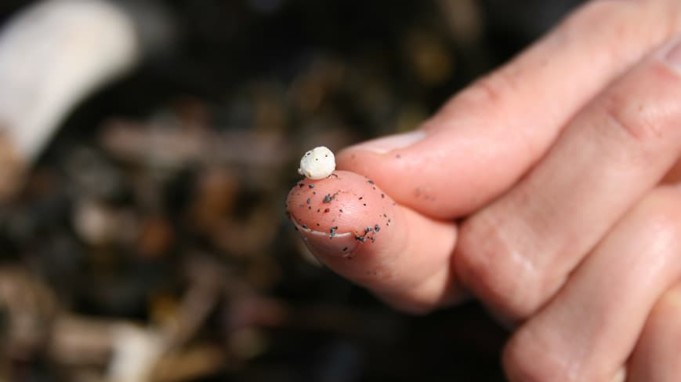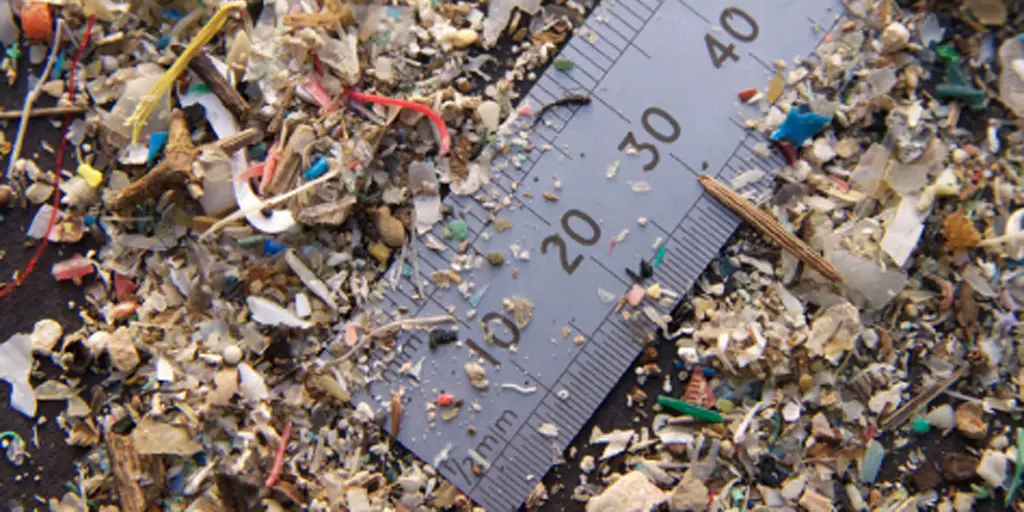Plastic is more in use than ever before, and most people make use of plastic every day. It is important to note that, plastic isn’t biodegradable because, over time it breaks down into tiny little pieces known as microplastics, that are not only dangerous but harmful to the environment.
These little buggers are so harmful that recent studies have shown that microplastics can be found commonly in the food we eat, especially seafood. However, it isn’t clear if these microplastics have an effect on human health.
What Are microplastics?
Microplastics are simply tiny pieces of plastic that are found in the environment. They are categorised as plastic particles smaller than 0.2 inches (5 mm) in diameter. They are produced as small plastics, in the form of micro-beads added to exfoliants and toothpaste, or created when larger plastics in the environment are broken down.
Microplastics are disturbingly everywhere around us and can be found in the rivers, oceans (ingested by fishes), soil that go into plants and consumed by animals. And your guess is as good as mine; humans consume them as well.
Countless studies in the 1970s focused its attention on the levels of microplastics in the oceans alone and discovered high levels in the Atlantic Ocean off the United States coast. The worst part is, as a result of the increased use of plastic around the globe, there is more plastic in rivers and oceans around the world.
It’s been estimated that every year, at least 8.8 million tons of plastic waste goes into the sea. As much as 276,000 tons (250,000 metric tonnes) of this plastic is presently floating at sea, while the better part of it has likely sunk or is washed ashore.
Microplastics in food
The fact that microplastics can gain access to our waters and soil, it automatically means plastic can get into our meals. Fifteen different brands of sea salt were examined, and about 273 micro-plastic particles per pound (600 particles per kilogram) was discovered.
Further studies showed up to 300 micro-plastic fibres per pound which are 660 fibres per kilogram of honey, and up to about 109 micro-plastic fragments per quart (109 pieces per litre) of beer.
Because microplastics are exceptionally common in seawater and are commonly ingested by sea creatures, making the most widely found micro-plastic in food seafood, this is because certain fishes identify plastic as food, which can result to toxic chemicals stored inside the fish’s liver and this affects deep-sea organisms, even more, signifying that microplastics affects even the most remote species.
Deep-sea creatures such as mussels and oysters are at a higher risk of micro-plastic contamination than other species. Mussels and oysters harvested for consumption had 0.36–0.47 particles of micro-plastic per gram. This means that people who eat shellfishes ingest up to 11,000 particles of micro-plastic per year.
Are microplastics affecting your health?
It is still unclear the effect microplastics have on our health; even studies have shown they are present in the food we eat. A chemical is known as phthalates used to make plastic flexible, increase the growth of breast cancer cells. However, the result is unclear since the research was carried out in a petri dish, so it can’t be generalised to humans.
A recent study on mice in a laboratory to determine the effects of microplastics showed that the microplastics accumulated in mice liver, intestine and kidneys, therefore increasing levels of oxidative stress molecules in the liver. The presence of microplastics also increased the level of a molecule that can be toxic to the mammal’s brain.
Micro-particles have been known to pass from the intestine into the bloodstream and into the organs, and examples of such micro-particles are microplastics. It’s also been discovered that plastic fibres are present in about 87% of the human lungs studied. Researchers proposed that the presence of plastic in the lungs may be due to microplastics present in the air.
Although, this has only been displayed in a test-tube, but it’s been shown that microplastics travelling in the air may cause lung cells to produce inflammatory chemicals. Bishenol A (BPA) is one of the common studied chemicals present in plastic. It is mostly found in a food storage container or plastic packaging and can drip into your food. More so, further evidence has shown that BPA can hinder reproductive hormones, especially in women.
How to avoid microplastics in food?
We are still unsure how microplastics affect human health but we know for sure they are present in many different sources of foods consumed by human, the majority of which comes from sea-food, particularly shellfish.
It’s not necessarily advised to avoid shellfishes and sea-food altogether since we can’t fully determine how microplastics affect health, but to be on a safer side, it is recommended to eat high-quality sea-foods from known and trusted sources.
Also, to reduce your risk of plastic contamination, it is crucial you limit your use of plastic food packaging. This helps in curbing micro-plastic intake and also helps the environment benefit from less exposure to plastic.













